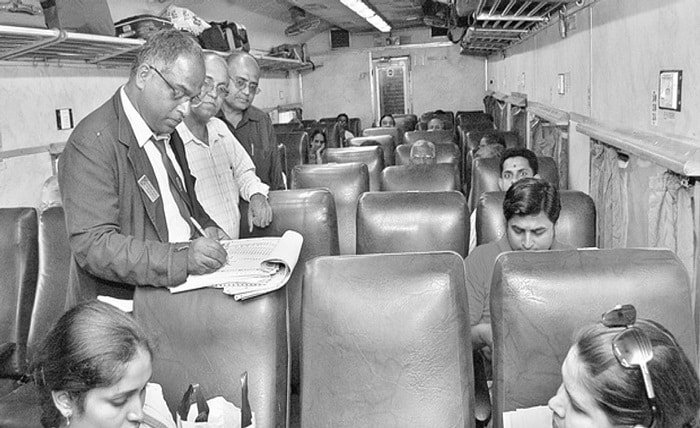Unlocking the Power of the TTE Lobby: Everything You Need to Know

The TTE Lobby plays a crucial role in the seamless functioning of railway operations. Known as the Travelling Ticket Examiner (TTE) Lobby, it is a centralized space within railway stations where TTEs check in for duty, receive assignments, and gather essential resources for their journey. The TTE Lobby ensures that railway staff are organized and ready to manage passengers efficiently, reducing confusion and improving the travel experience.
In the broader scope of Indian Railways and other systems globally, the TTE Lobby serves as a backbone for ticketing and on-train passenger services. It helps TTEs coordinate, file reports, and sometimes access rest areas or lockers for safekeeping their belongings. With the digitalization of railways, many TTE Lobby systems have transitioned to smart platforms, offering paperless schedules and real-time communication tools.
The Core Functions of a TTE Lobby in Railway Operations
A TTE Lobby is more than just a waiting room for railway staff—it functions as a fully integrated control unit for ticket examiners. One of the primary functions of the TTE Lobby is to issue train duty charts and route information to TTEs before they board the train. This ensures that every ticket examiner is updated with passenger data, coach assignments, and emergency protocols.
Another key purpose of the TTE Lobby is maintaining records. TTEs log their work details, such as the number of tickets checked, fines collected, or seat allocations made during travel. Without a proper TTE Lobby, it would be chaotic to track accountability and operational metrics. Additionally, modern TTE Lobby facilities often come equipped with biometric scanners, Wi-Fi connectivity, and CCTVs to ensure both security and efficiency in managing the staff roster.
How TTE Lobby Management Supports Passenger Convenience
The TTE Lobby is indirectly responsible for enhancing passenger convenience in many ways. When a TTE Lobby operates effectively, it ensures that ticket examiners are well-prepared and punctual. This preparedness helps in better handling of seat allocation requests, onboard issues, and general inquiries from travelers. As TTEs get briefed at the TTE Lobby, their understanding of journey-specific requirements improves service delivery across routes.
Moreover, with digital systems in the TTE Lobby, real-time updates regarding waitlisted passengers, seat availability, and ticketing irregularities are shared with TTEs. This streamlines operations and helps the TTE handle reallocation of seats on the go. A well-managed TTE Lobby ensures that travelers receive a smooth, professional, and transparent service throughout their journey.
Modern Technology Transforming the TTE Lobby System
Technology has revolutionized the TTE Lobby system by shifting many functions to cloud-based and mobile-friendly platforms. In earlier days, TTEs had to manually record entries in ledgers and carry physical charts. Today, digital dashboards within the TTE Lobby help staff track duty schedules, download seat occupancy charts, and receive real-time alerts.
Railway departments are also using AI to predict passenger volumes and adjust TTE rosters accordingly, all via tools integrated into the TTE Lobby. Smart attendance systems with fingerprint or retina scan have improved transparency and time tracking. The automation introduced in the TTE Lobby helps reduce human error, ensures prompt reporting, and enhances the passenger experience by having fully informed staff on board.
Challenges Faced in the TTE Lobby Infrastructure
Despite its importance, the TTE Lobby infrastructure in some regions still faces several challenges. Many older stations have underdeveloped TTE Lobby facilities that lack proper lighting, seating, and digital access. This can hamper the working conditions of TTEs and directly impact the quality of service provided on trains.
In some locations, the TTE Lobby might be overcrowded or not big enough to accommodate the number of TTEs reporting in. This results in miscommunication and delays in train boarding. Additionally, maintenance issues such as poor sanitation or broken devices further reduce the functionality of a TTE Lobby. These challenges highlight the need for modernization and regular monitoring of the TTE Lobby system across all railway divisions.
Steps Taken by Indian Railways to Upgrade the TTE Lobby
Indian Railways has acknowledged the significance of the TTE Lobby and has initiated various upgrades over the past few years. New lobbies are being constructed with modern amenities like clean restrooms, lounge areas, and advanced digital access points. The aim is to ensure that the TTE Lobby becomes a comfortable and resourceful environment for TTEs across the country.
One of the key upgrades includes the integration of RailMadad and NTES (National Train Enquiry System) within the TTE Lobby interface. These apps allow staff to stay informed and communicate effectively during their duty. Additionally, training programs are being conducted in the TTE Lobby to help staff become more tech-savvy. These developments are a step in the right direction to standardize and professionalize the functioning of every TTE Lobby.
Future of the TTE Lobby in Smart Railway Ecosystems
The future of the TTE Lobby is bright as railways continue to adopt smart technologies and passenger-centric policies. There are proposals to create fully automated TTE Lobby facilities with minimal manual interaction. These will include self-check-in kiosks, face recognition attendance systems, and integrated health monitoring stations for staff well-being.
Moreover, the TTE Lobby is expected to become more than just an administrative checkpoint. It could evolve into a control center where TTEs coordinate live with train control rooms, access AI-based decision support, and provide feedback for real-time analytics. As sustainability becomes a focus, the future TTE Lobby may also feature solar-powered setups and eco-friendly designs to reduce the carbon footprint.
Conclusion
The TTE Lobby is a vital, often overlooked, component in the efficient functioning of railway systems. It serves as a hub where TTEs receive their duties, tools, and information needed to provide a smooth and effective service to passengers. As railway systems evolve with digital transformation, the TTE Lobby too is undergoing rapid changes to match the pace of modernization.
From digital dashboards to smart attendance systems, the TTE Lobby is embracing technology for better management and transparency. Challenges still exist, particularly in terms of infrastructure and maintenance in some regions, but continuous improvements are paving the way for a more standardized and professional environment.
Ultimately, the TTE Lobby is more than a physical space—it’s a cornerstone of railway service efficiency. With continued investment and innovation, the TTE Lobby will remain an indispensable part of our rail journeys.
FAQs
1. What is the primary purpose of a TTE Lobby?
The TTE Lobby serves as a centralized space where Travelling Ticket Examiners report for duty, receive assignments, and collect travel-related resources.
2. How does technology improve the TTE Lobby system?
Digital dashboards and biometric attendance tools in the TTE Lobby enhance scheduling, data tracking, and reduce manual errors for staff.
3. Are all railway stations equipped with a TTE Lobby?
Most major and mid-size stations have a TTE Lobby, but some remote or smaller stations still lack modernized lobby infrastructure.
4. Can passengers access the TTE Lobby?
No, the TTE Lobby is restricted to railway staff, particularly TTEs, and serves as an administrative and preparation area.
5. What improvements are planned for the TTE Lobby in the future?
Future TTE Lobby upgrades include automation, self-check-in kiosks, real-time coordination tools, and eco-friendly infrastructure.





